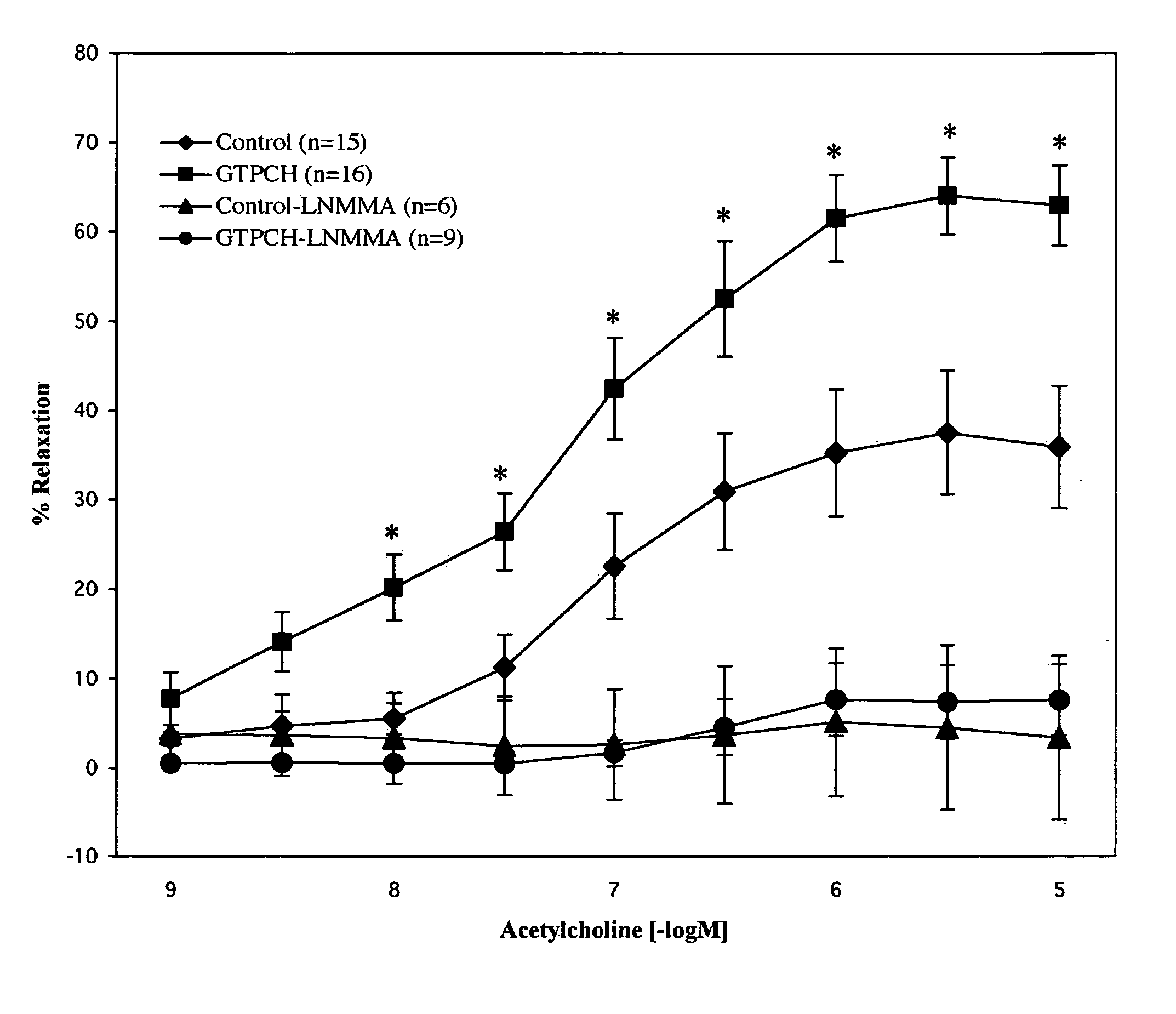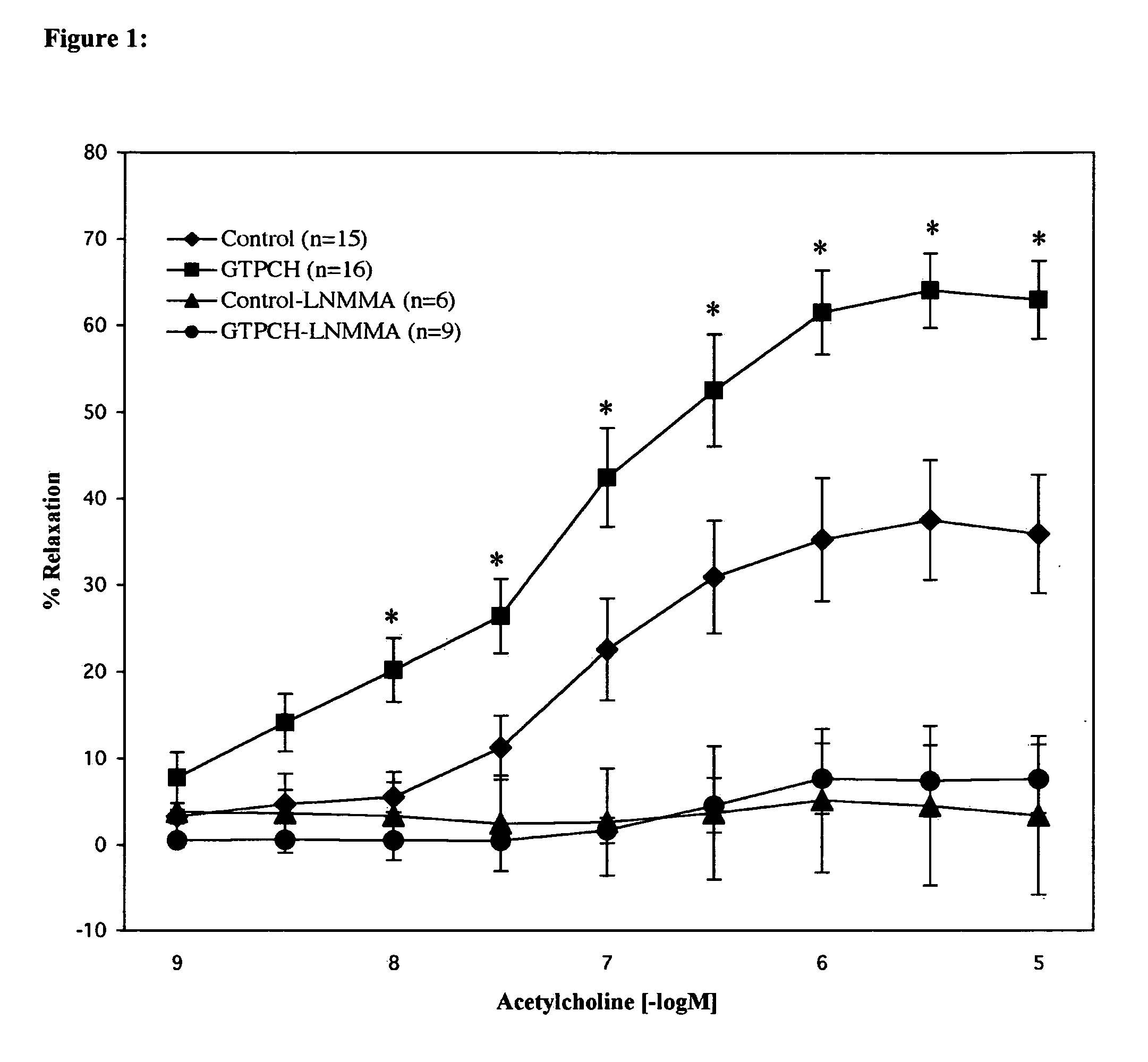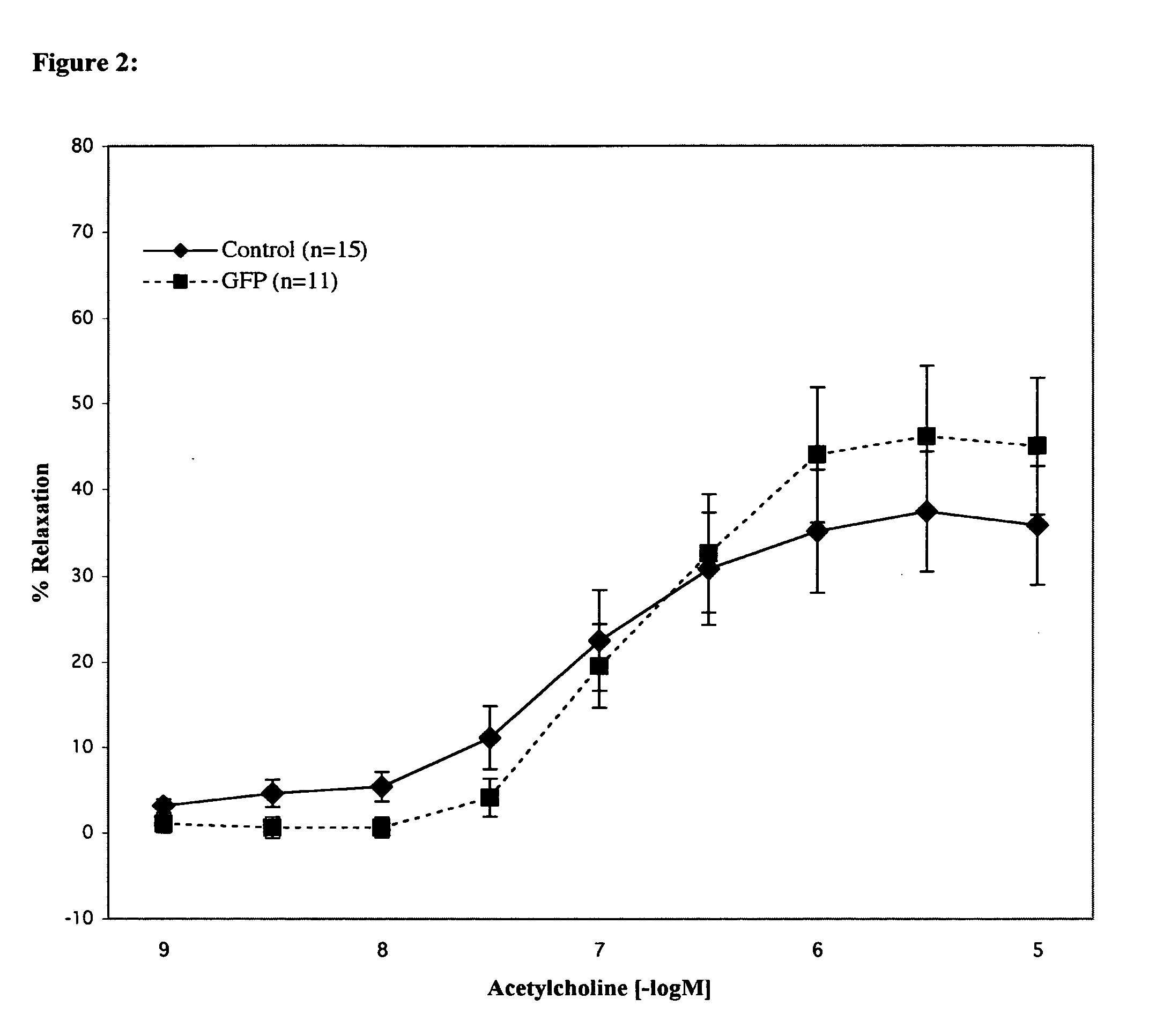Endothelium-targeting nanoparticle for reversing endothelial dysfunction
a technology of endothelium and nanoparticles, applied in the direction of biocide, antibody medical ingredients, genetic material ingredients, etc., can solve the problem of not providing the required expression levels, and achieve the effect of promoting the long-term production of gtpch proteins
- Summary
- Abstract
- Description
- Claims
- Application Information
AI Technical Summary
Benefits of technology
Problems solved by technology
Method used
Image
Examples
example i
Nitric Oxide (NO) Synthesis in Endothelial Cells is Impaired in Diabetes
[0058] As shown herein, the inhibition of NO synthesis in the spontaneously diabetic BB (BBd) rat is due to decreased levels of tetrahydrobiopterin (BH4), secondary to decreased expression of GTP cyclohydrolase I (GTPCH). In one example, an adenoviral GTPCH gene transfer was used to reverse BH4 deficiency and repair the ability of endothelial cells to produce NO. GTPCH gene transfer increased BH4 levels in BBd endothelial cells from 0.17±0.02 (mean±SEM) to 73.37±14.42 pmoles / million cells and NO production from 0.77±0.07 to 18.74±5.52 nmole / 24 hr / million cells.
[0059] To demonstrate a functional effect of increasing BH4 concentrations in tissues, GTPCH was transferred into aortic rings from BBd and Zucker diabetic fatty (ZDF) rats, models of human type I and type II diabetes, respectively. GTPCH gene transfer led to a dose-dependent increase in acetylcholine-induced vasorelaxation, preventable by inhibiting NO ...
example 2
Design and Use of a Nanoparticle to Improve Endothelial Cell Function
[0091] A targeting nanoparticle complex may be prepared containing a condensed DNA core (containing a nucleic acid sequence encoding GTPCH), a hydrophobic polymer layer, a hydrophilic polymer layer, and a layer of ligand at the outer surface (Lox-1 receptor monoclonal antibody). These nanoparticles are designed to deliver the nucleic acid sequence to damaged endothelial cells, increasing tetrahydrobiopterin and nitric oxide synthesis in these dysfunctional cells. By increasing production of GTPCH protein, and thus tetrahydrobiopterin and nitric oxide synthesis in cells, the impairment in the cell can be reversed or reduced, and endothelial function will be improved. In addition, by increasing the cellular level of tetrahydrobiopterin in the cell, the antioxidant pool is increased and the cell will be protected from future oxidative damage.
example 3
Assembly of a Nanoparticle Complex
[0092] The assembled nanoparticle complex can have a layered structure with a condensed DNA core, a hydrophobic polymer layer, a hydrophilic polymer layer and a layer of ligand at the outer surface. This layered nanoparticle will be generated by the self assembly of DNA on mixing with a tripartite polymer conjugate. This tripartite polymer conjugate will include a DNA binding cationic polymer such as polyethyleneimine (PEI), a hydrophilic polymer polyethylene glycol (PEG) covalently conjugated to primary amines of PEI, and a ligand (e.g., Lox-1 monoclonal antibody [Lox-1-mAb]) conjugated to the distal end of PEG. On mixing with DNA, PEI will bind and condense the plasmid DNA forming a hydrophobic core and the hydrophilic PEG polymer will form a layer around the core providing a steric protective coat. Since the ligand is attached to the end of PEG, it will be exposed on the surface of the resulting nanoparticle (50-100 nm in size). While the steric...
PUM
| Property | Measurement | Unit |
|---|---|---|
| Size | aaaaa | aaaaa |
| Concentration | aaaaa | aaaaa |
| Biocompatibility | aaaaa | aaaaa |
Abstract
Description
Claims
Application Information
 Login to View More
Login to View More - R&D
- Intellectual Property
- Life Sciences
- Materials
- Tech Scout
- Unparalleled Data Quality
- Higher Quality Content
- 60% Fewer Hallucinations
Browse by: Latest US Patents, China's latest patents, Technical Efficacy Thesaurus, Application Domain, Technology Topic, Popular Technical Reports.
© 2025 PatSnap. All rights reserved.Legal|Privacy policy|Modern Slavery Act Transparency Statement|Sitemap|About US| Contact US: help@patsnap.com



